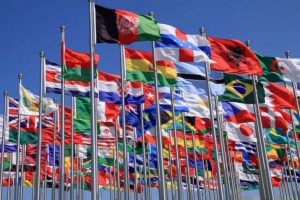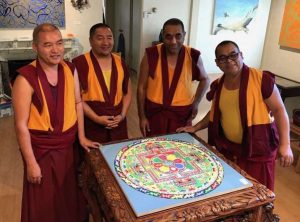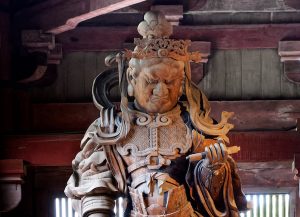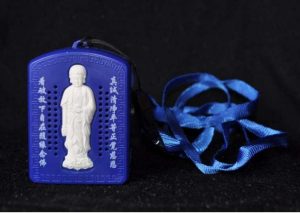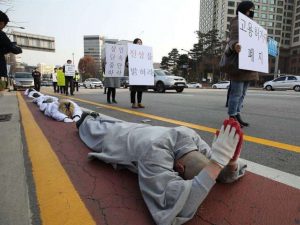
Dr. Terentyev’s third article in this series builds on the historical tensions between successive Russian administrations and the country’s Buddhist communities, which climaxed in the cultural decimation unleashed by the Soviets. Yet, as they had done in the Russian Empire, Buddhists offered their own kind of resistance, mindful of the crushing might of the government, but steadfast to the belief that the Dispensation was worth dying for.
At the beginning of the 1930s, as the period of “collectivization” began, it became clear that the real question was whether the Buddhist clergy could survive at all. Even the Renovationist Party’s program was set aside in the face of new tragedies. Lamas were stripped of the right to own land, and taxes on them were increased so much that for many it was impossible to stay in the monasteries. Arrests and pogroms began, during which works of art and literature were mercilessly destroyed. By 1935 approximately one third of Buryat datsans were empty because all of the clergy had either fled or been imprisoned or executed. In 1936 the remaining ones were closed and the lamas were arrested as enemies of the people or Japanese spies.
An analogous process took place in Kalmykia and the formally independent (since 1921) Tanna-Tuva. In Kalmykia, over the period 1917 to 1937, 79 khuruls were liquidated. The cancellation in 1943 of Kalmyk autonomy and the genocide-like resettlement of the Kalmyk people to Siberia left no one willing or able to stop the destruction of temples and Buddhism in Kalmykia. In Tuva, at first the religion was untouched, and in 1928 the Malyi Khural (parliament) even passed a law proclaiming Buddhism the state religion. This apparently provoked the destruction of religion that began in 1929 and intensified in 1930 by Resolution II of the Plenum of the Central Committee and TsKK ARP On the Lamaist Question. According to eyewitnesses, they started to come for the lamas systematically: at first they took the upper levels of the clergy, then the next level down, and so on until all had been removed.
In Tuva, as in Kalmykia, all of the temples had been burned to the ground. If there remained one stone building among the Kalmyks (the stone Khosheutov khurul of the Tiumen princes), in Tuva there remained only remains of the one-meter-thick walls of the Chadan khure.
The very small portion of Buddhist manuscripts, sculpture, and tapestries which were saved ended up in Moscow and Leningrad museums, making them the richest collections in the world of Buddhist art.

At the end of the Second World War, Stalin softened his attitude toward religion, and this was reflected in the government’s relations with Buddhism. Taking into account the patriotic activities of Buddhists during the Great Fatherland War, the government gave the Buddhists of Buryatia permission to rebuild one small monastery.
A congress of leading Buddhists from the Buryat-Mongol Autonomous Republic took place May 21-23, 1946 in Ulan-Ude, organized by a group of lamas and believers headed by former monks A. Galsanov and L.M. Darmaev. It established a Law of Spiritual Administration of Buddhists and a Regulation for Buddhist Clergy of the USSR in which lamas were obligated to honor the Fatherland of workers on an equal level with their holy Buddhist faith and in every way promote its strengthening and flourishing.
The governing organ of the Buddhist church was the Central Spiritual Board of Buddhists of the USSR (‘TsDUB’), headed by a Chairman who was given the old title ‘Bandido Khambo-Lama’. The residence of TsDUB was the new temple Khambin sume (now the Ivolginsky datsan), constructed in a swamp area some thirty kilometers from Ulan-Ude. The first Bandido Khambo-Lama of the new era was Lobsan-Nima Darmaev (1890-1960).
Soon permission was given to open a second Buddhist temple – the Agin datsan in the Chita region. Despite the strict control of the government, these two datsans preserved the Buddha’s teaching over the all the long decades preceding the beginning of perestroika, or political reforms.
After L.N. Darmaev, from 1956 to 1963, the post of Bandido Khambo-Lama was occupied by Eshi Dorzhi Sharapov (1885-1963), and after that by Zhambal Gomboev (1897-1983).

Besides these centers, for which all of twenty or so clergy were permitted, throughout the Buddhist lands about a hundred of former lamas were illegally active, having been released from camps. They carried out religious ceremonies for fellow villagers and practiced Tibetan medicine. The KGB carefully watched them but did not interfere, limiting itself to warnings. Some of the lamas started to take on disciples informally, outside the traditional Buddhist structures. The most famous such group formed around the Buryat lama B. Dandaron. In 1972 Dandaron was arrested for organizing a Buddhist sect and two years later perished in the Soviet Gulag.
The government began to make use of legal Buddhism for the service of its political needs in the East and to demonstrate to the nations of Asia freedom of conscience in the Soviet Union. For this purpose in 1956 the TsDUB SSSR was entered into the International Brotherhood of Buddhists, and in 1969 a new international organization was created, the so-called Asiatic Buddhist Conference for Peace. This was composed of Buddhist countries loyal to the Soviet Union or dependent on it.
In the 1970s a Buddhist College of higher education was established and began to prepare new cadres for Mongolia and Buryatia to replace the outgoing generation, by means of a short five-year course of studies.
See Our Full Series of A History of Buddhism in Russia
The Early Centuries
Tensions with the Tsars
The Sangha and the Soviets
Return to Saint Petersburg


